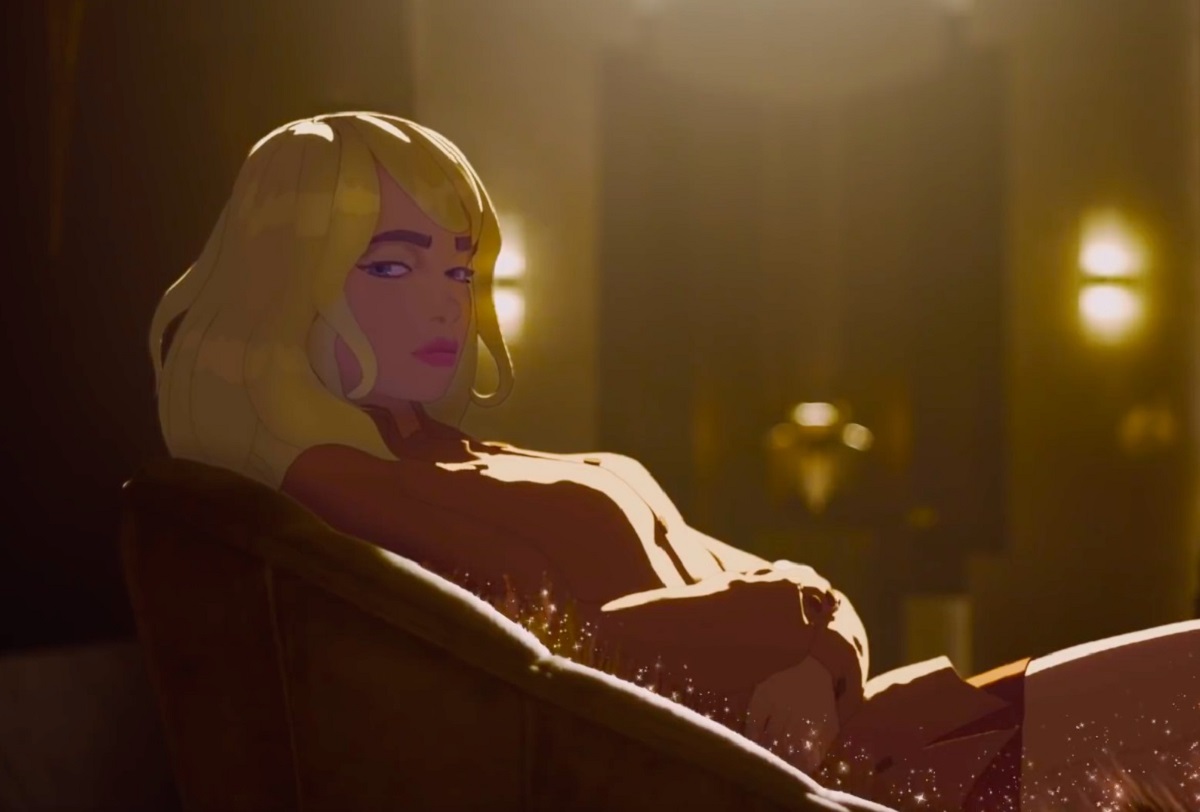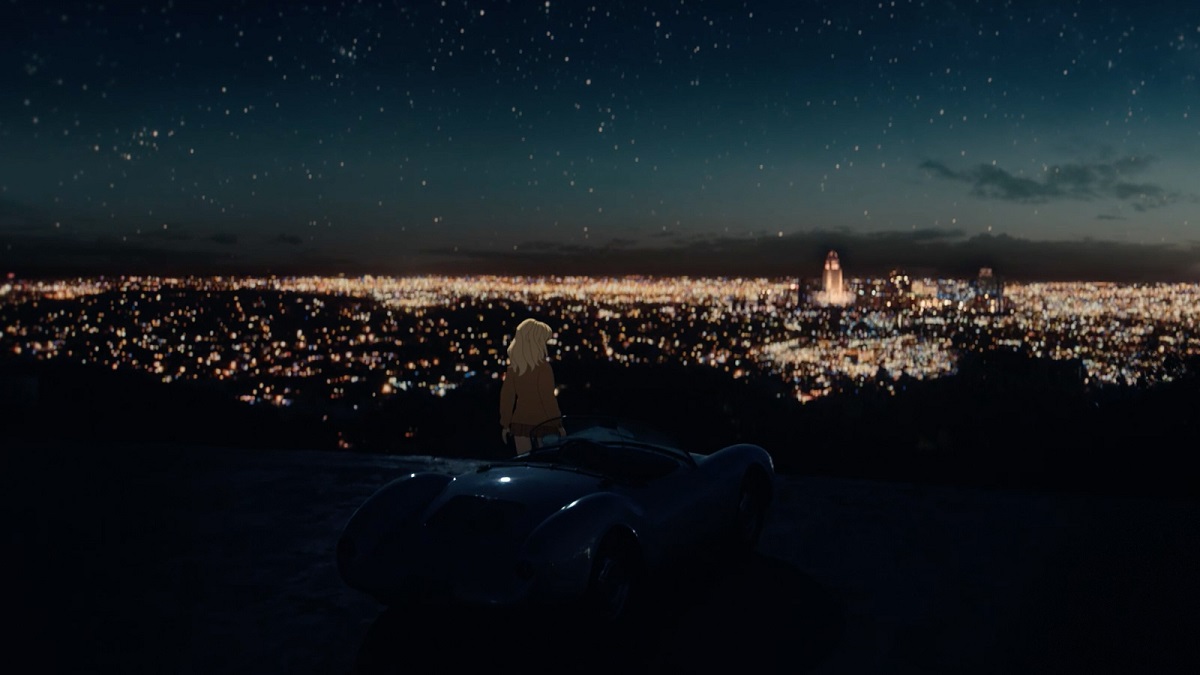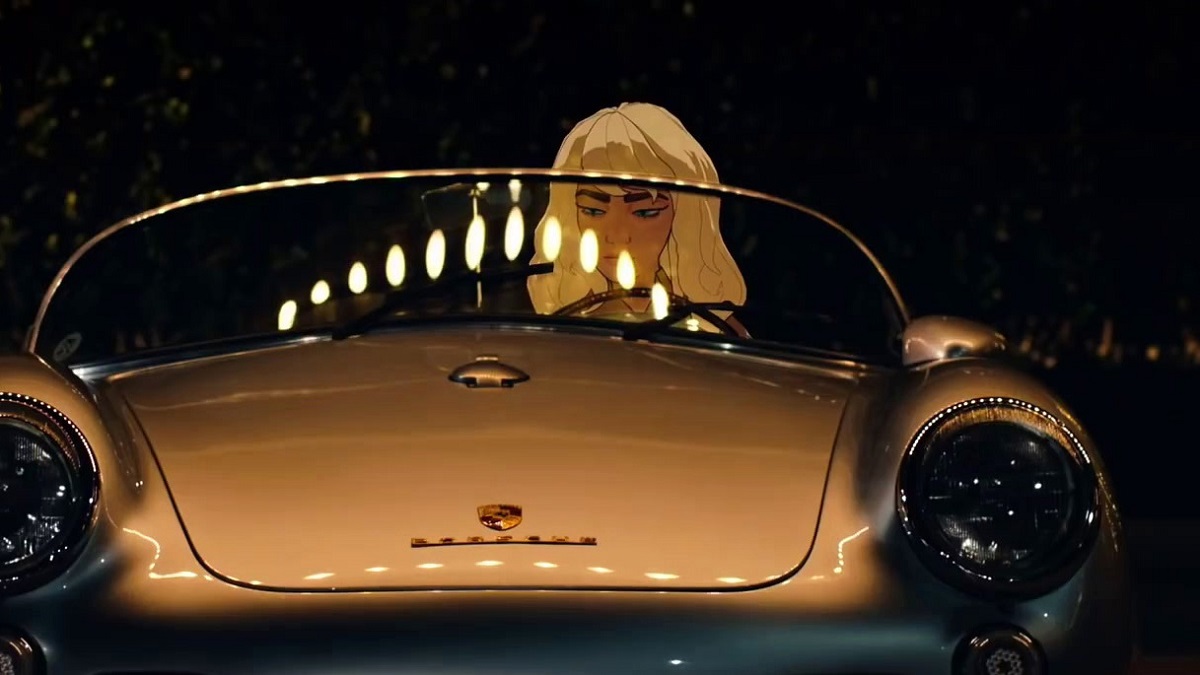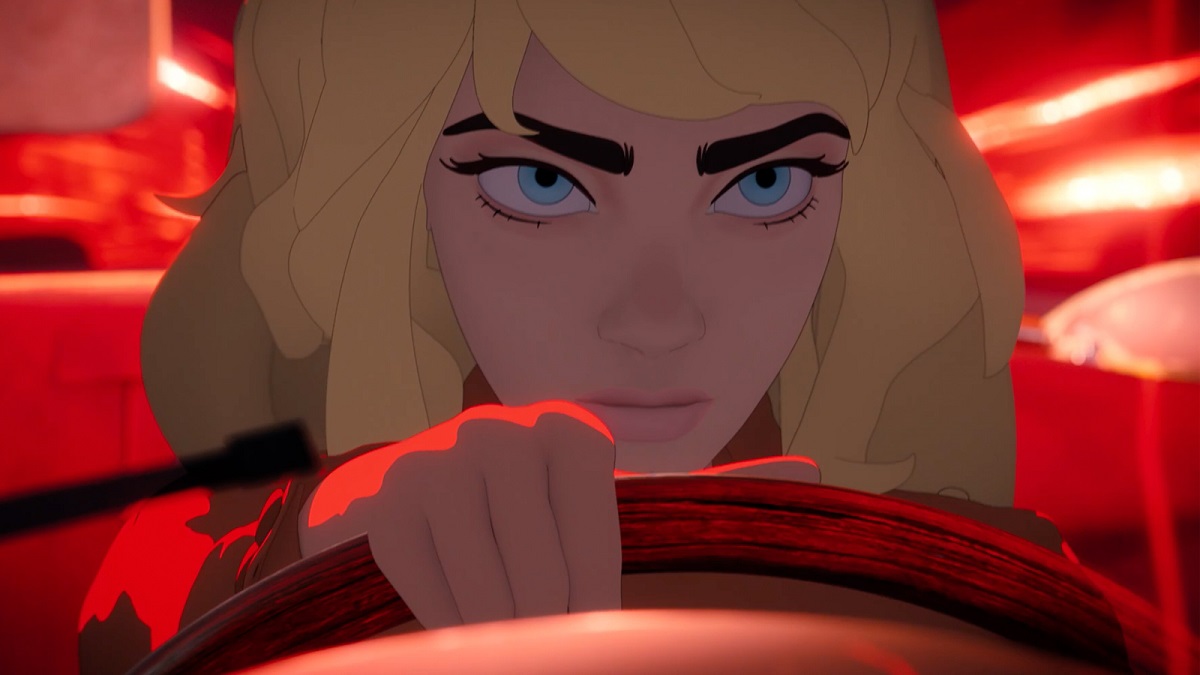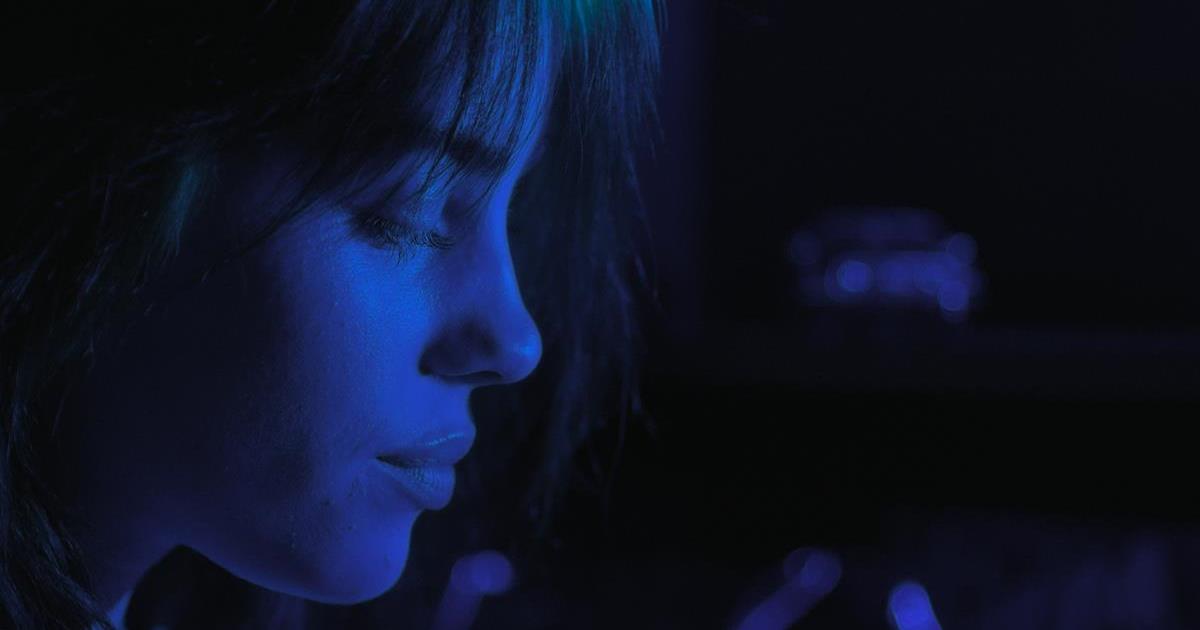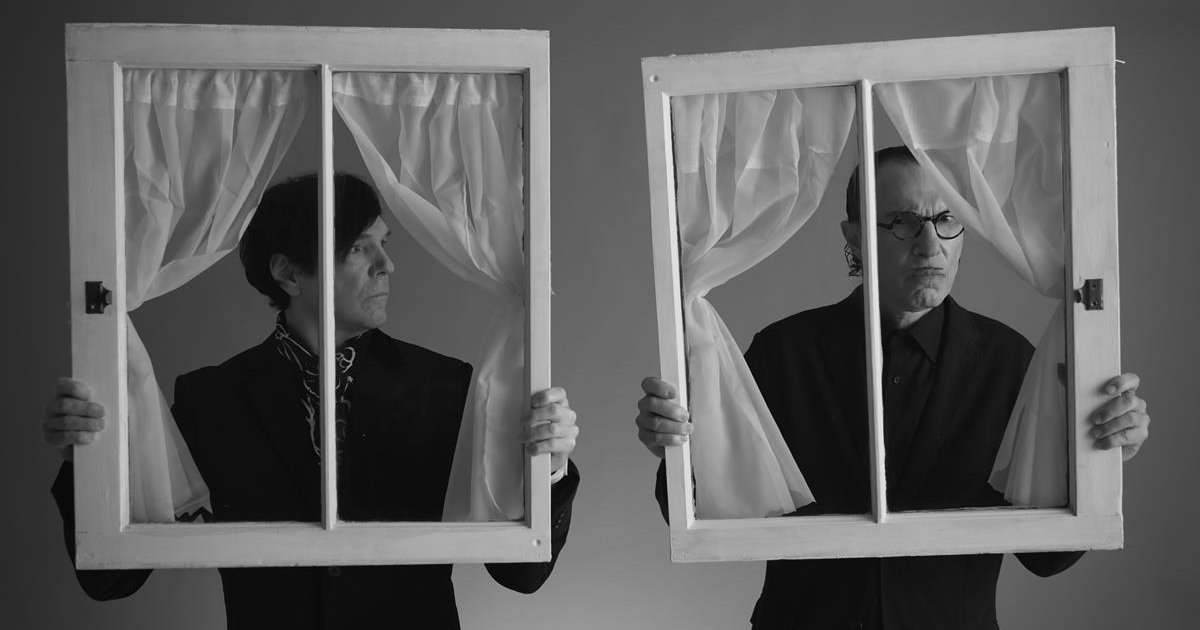
Billie Eilish’s Happier Than Ever: A Love Letter to Los Angeles isn’t just a concert film, it’s an anthem to her home city. It isn’t the achievement fable of La La Land either, as it celebrates rather than cogitates. Directors are the multi-talented Robert Rodriguez and Oscar-winning animator Patrick Osborne. Osborne was brought on board to bring an animated Billie into a parallel road trip — in a real Porsche 356 Speedster, what else? — around her favorite parts of the city. We end up with animated Billie turning up at the concert, albeit a bit late, but there is a knowing smile between real and animated Billie, which is pure Disney.
Rodriguez says of the addition of the animation, “I think it’s very complementary to what’s going on. I don’t think it’s jarring or pulls you out of it. It’s still a concert film, but it’s got these elements that just make it extra special and really makes it feel like a tour through LA.”
Billie’s epicenter and the concert venue is the iconic Hollywood Bowl, which drips with the Art Deco flavors that obviously haunt and inspire her. Over five consecutive nights in July, the film was put together with help from her brother and regular collaborator, producer/performer Finneas. The track list is her latest album, Happier Than Ever, but to sometimes fill that huge Bowl stage, she’s also joined by the Los Angeles Philharmonic conducted by Gustavo Dudamel and, for one song, the Los Angeles Children’s Chorus (she used to sing in the choir). Cinematography is by Pablo Berron.
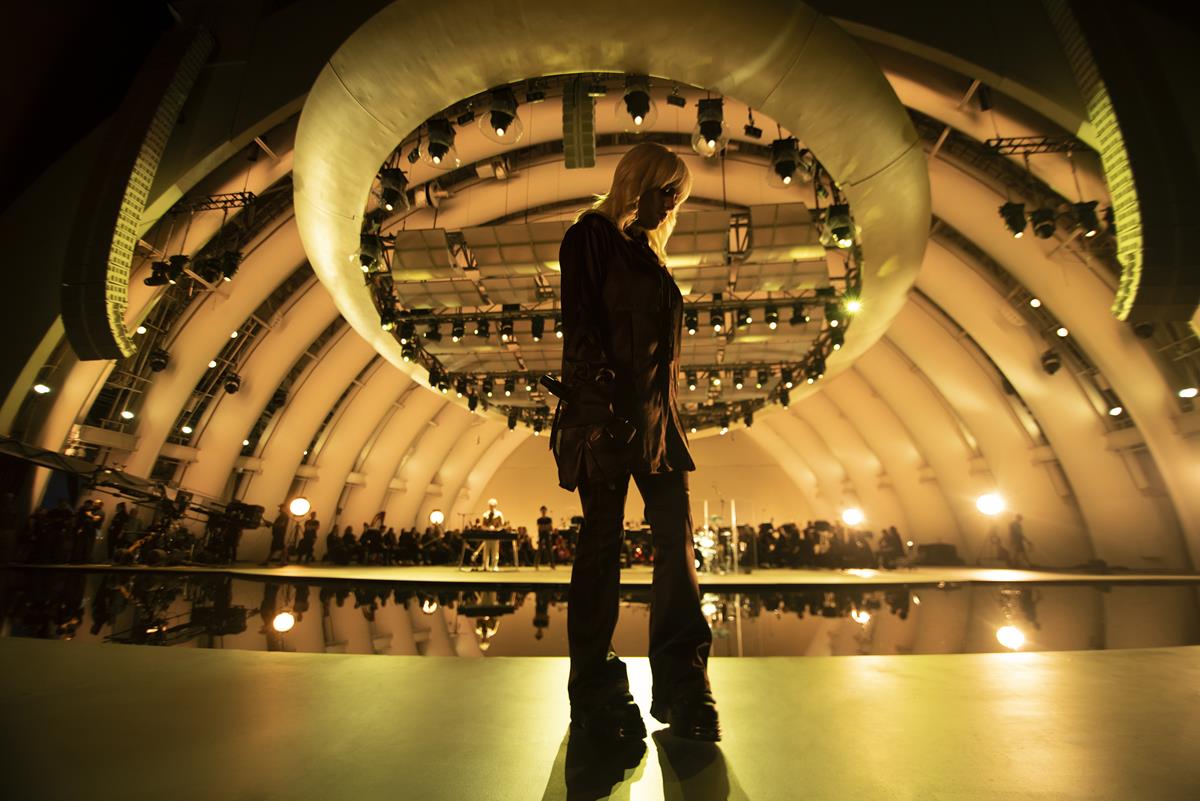
Rodriguez told Collider how the “no audience” Hollywood Bowl helped the camera channels capture the performances, “We shot at the Bowl with no audience, which meant we were able to move the camera for every song, all the cameras. Where usually when you shoot a concert film, the cameras have to kind of stay in their spot because you can’t be moving a crane from one side of the arena to the next during the songs.
“So we were able to shoot drones over places you never could get it. We were able to put a reflecting pool back in that was in originally when it was built that has never been there since. They use that for seats. It reflects the Bowl back into itself. So it becomes a circle. Just really graphically awesome.”
READ MORE: Exclusive: Robert Rodriguez on Billie Eilish’s ‘Happier Than Ever,’ ‘The Book of Boba Fett,’ and the ‘We Can Be Heroes’ Sequel (Collider)
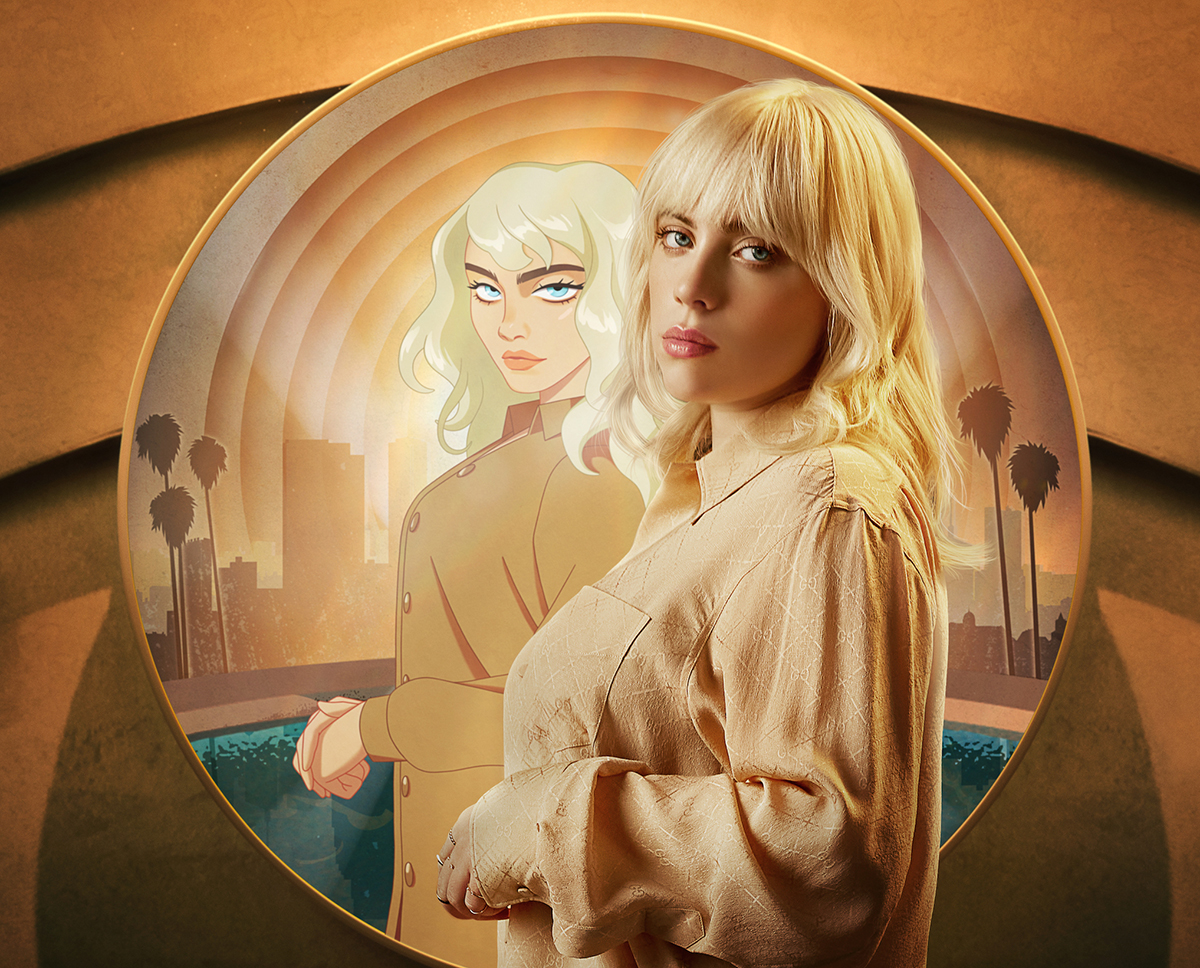
Rodriguez also spoke with Collider about how the film incorporates animated elements to visually depict Eilish’s personal journey through Los Angeles and her life:
“[Eilish] wants to do something with an animated character going to Hollywood and have a concert kind of interwoven with the concert… We were going to have to shoot at the Bowl with no audience, which means we were able to move the camera for every song, all the cameras. Where usually when you shoot a concert film, the cameras have to kind of stay in their spot because you can’t be moving a crane from one side of the arena to the next during the songs. So we were able to shoot drones over places you never could get it. We were able to put a reflecting pool back in that was in originally when it was built that has never been there since. They use that for seats. It reflects the Bowl back into itself. So it becomes a circle. Just really graphically awesome. And then motion capturing Billie and working with her to make this animated character go through LA.”
READ MORE: How to Watch ‘Happier Than Ever: A Love Letter to Los Angeles’: Where to Stream Billie Eilish’s Unique Concert Film (Collider)
Co-director Osborne knew that Eilish was a huge fan of movies about LA, especially the hybrid animation/live action genre, as he told Animation Magazine. “Billie is a big fan of classic movies that are set in LA as well as hybrid animation/live action classics like Richard Williams’ Who Framed Roger Rabbit and Ralph Bakshi’s Cool World, so we wanted to pay homage to these fictitious versions of Los Angeles that only exists in movies,” he said.
“That was the basis of our plan, to construct this modern version of a classic animated character, which ended up being a noir animated femme fatale version of Billie against live-action backdrops of LA.”
The plan called for creating animated segments between the songs that are performed by Eilish at the Bowl. The animation, which was produced at Nexxus in London, with the aid of Digital Frontier and Zoic Studios, was a combination of CG with some drawn-over motion-capture footage. “We did about 90 minutes of motion capture of Billie, but what we got was iconic,” says Osborne. “She has this way of moving and interacting with the camera as well as breaking the fourth wall. We only had about 12 weeks, so we had to do everything very quickly.”
The veteran animator says he prevised everything in Blender from the motion capture shoot to building the interstitial scenes based on the performances they had. “Then, we would hand-animate and clean up on top of that footage later. It was a fascinating and fun editorial process. There were storyboards, but they were simple drawings, maybe one per shot. It wasn’t your typical animatic. We had about five or six animators on the Billie animation. Sallyanne Massimini was our VFX supervisor who oversaw all the studios on the project.”
READ MORE: Patrick Osborne Creates an Animated Noir Version of Billie Eilish (Animation Magazine)
The live shoot by director of photography Pablo Berron employed five Sony VENICE cameras handheld or on Steadicam rigs, but in a traditional live concert shoot setting. The Hollywood Bowl’s full lighting rigs were used to great effect, but there was other, more cinematic lighting used for close-ups to add softness and counter any shadows from the high theatrical lights, Berron explained on the CineD website.
“One of my main concerns when I first got the call to the job was, how are we going to work with the stage lighting to make it cinematic?” he said. “Because I knew a concert lighting designer was going to be involved with the general design of what was happening with the lighting. And I’ve worked with theatrical lighting designers before, and it’s a very different idea of how to light.
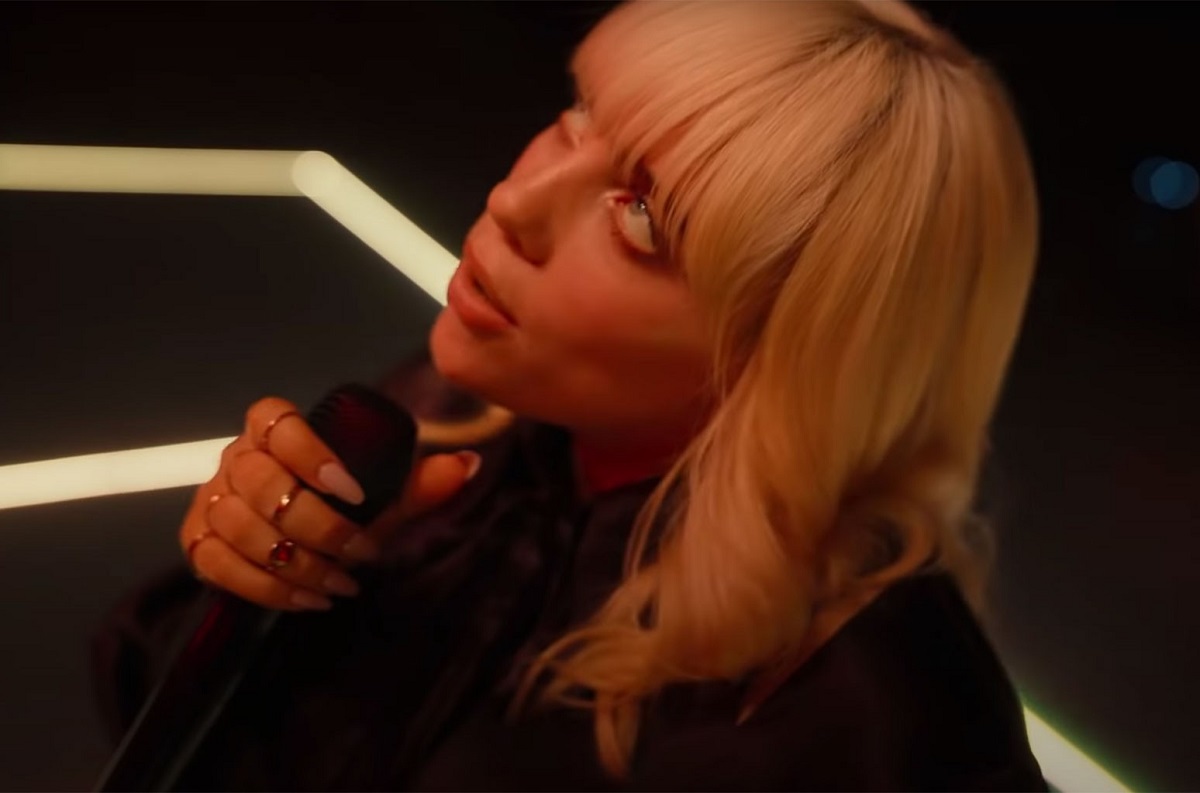
“They’re lighting for an audience; these very steep, hard lights from very high angles; they are very frontal and flat. And that’s really not the most flattering thing when you’re trying to photograph somebody close up.
“And I really wanted to shoot Billy really close, with the camera really close to her face and just do stuff that you wouldn’t normally be able to do in a concert film with an audience, for example.
“But as it turned out, Billie’s tour lighting designer Tony Caporale was unbelievably collaborative and a real ace all around. He understood perfectly from the beginning that this was about the camera and not an audience in a big venue, and he was super receptive to all of my ideas.
“So he and I and my longtime gaffer Konrad Siggurdsson came up with an overall approach over three weeks prior to the shoot.”
That approach included a combination of special-built RGB 36″ soft China balls for close-ups, and ARRI Sky Panels placed on the sides or lighting from the floor for certain songs.
“I think we also had six or eight big 10ks lining the stage and then placed another pair strategically, really far downstage on the sides to sort of make them be a pretty, cinematic sidelight for her,” said Berron. “The idea was, as much as possible, to eliminate the follow-spot concert lighting that usually functions as the performer’s key light and figure out a different way to get light on them from places where you’d never expect the light to come from in a show with a live audience.”
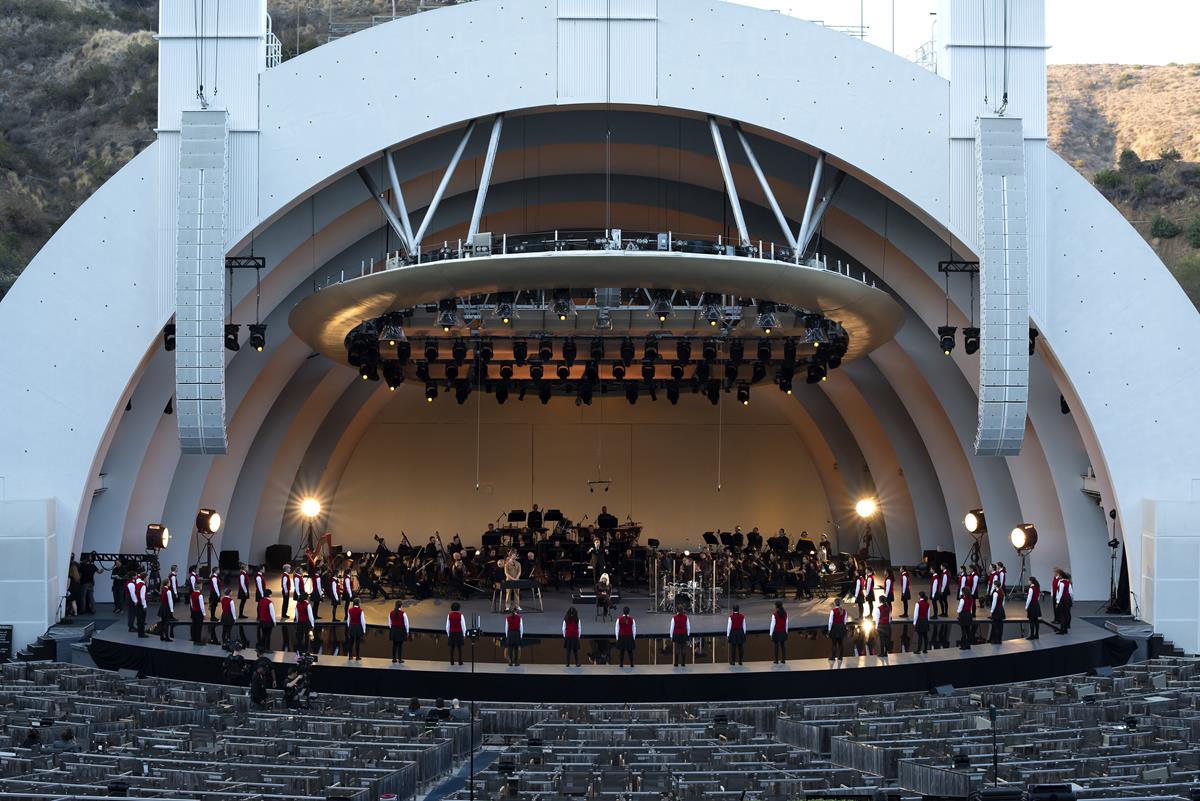
READ MORE: Filming Billie Eilish at the Hollywood Bowl – Exclusive Interview with DP Pablo Berron (CineD)
Another concern for Berron was time, as he explained to Michael Goldman in an interview for the Sony Cine website. “It was a completely insane idea, once I understood the full scope of the project,” the cinematographer recalled. “First and foremost was the schedule we had — about four nights with Billie and Finneas and the band, one full night with the Philharmonic, a day of shooting promos, and later, a few inserts. So, we were tasked, in a sense, with shooting four music videos every night.”
Berron also described the Sony VENICE-specific base LUT that was crucial in “finding” the look for each song during production.
“I had done a VENICE project not long before, and my friends at [LA-based post-production house] Company 3 had given me some look-up tables designed specifically for the VENICE,” Berron said. “As soon as I saw them paired with this camera, I thought this was the best, most filmic look I have gotten from a digital camera. I kept that in mind when I got this project, and felt confident we could get a filmic, pretty image.”

The Sony VENICE’s full-frame 6K sensor, along with the camera’s ND filtering capabilities, was also very appealing to Berron for a fast-paced project like Happier Than Ever, he told Goldman.
“I felt that since we didn’t know all the specifics of the lighting environment, shooting at 2000 ASA would be like a dream, plus I could have [digital imaging technician Dan Skinner] control cameras remotely. In fact, if the lighting programmer couldn’t quickly change a master fader, the DIT could change ND in one-stop increments at the press of a button, something no other camera is really able to do, and which is a brilliant feature,” he said.
“I also was planning to use a huge array of lenses, far more than I normally would on a typical music video, commercial, or movie, and this was one of the few cinema cameras that can give you Super 35 optics with a center crop and still give you a 4K output.”
READ MORE: Shot on VENICE: Pablo Berron Lenses Billy Eilish at the Hollywood Bowl for Disney+ (Sony Cine)
The hour-long concert is a great launch for the new album from a rapidly evolving artist who is obviously open to wide influences especially those that have made her who she is, including the city of Los Angeles.
Happier Than Ever: A Love Letter to Los Angeles is now streaming on Disney+.
